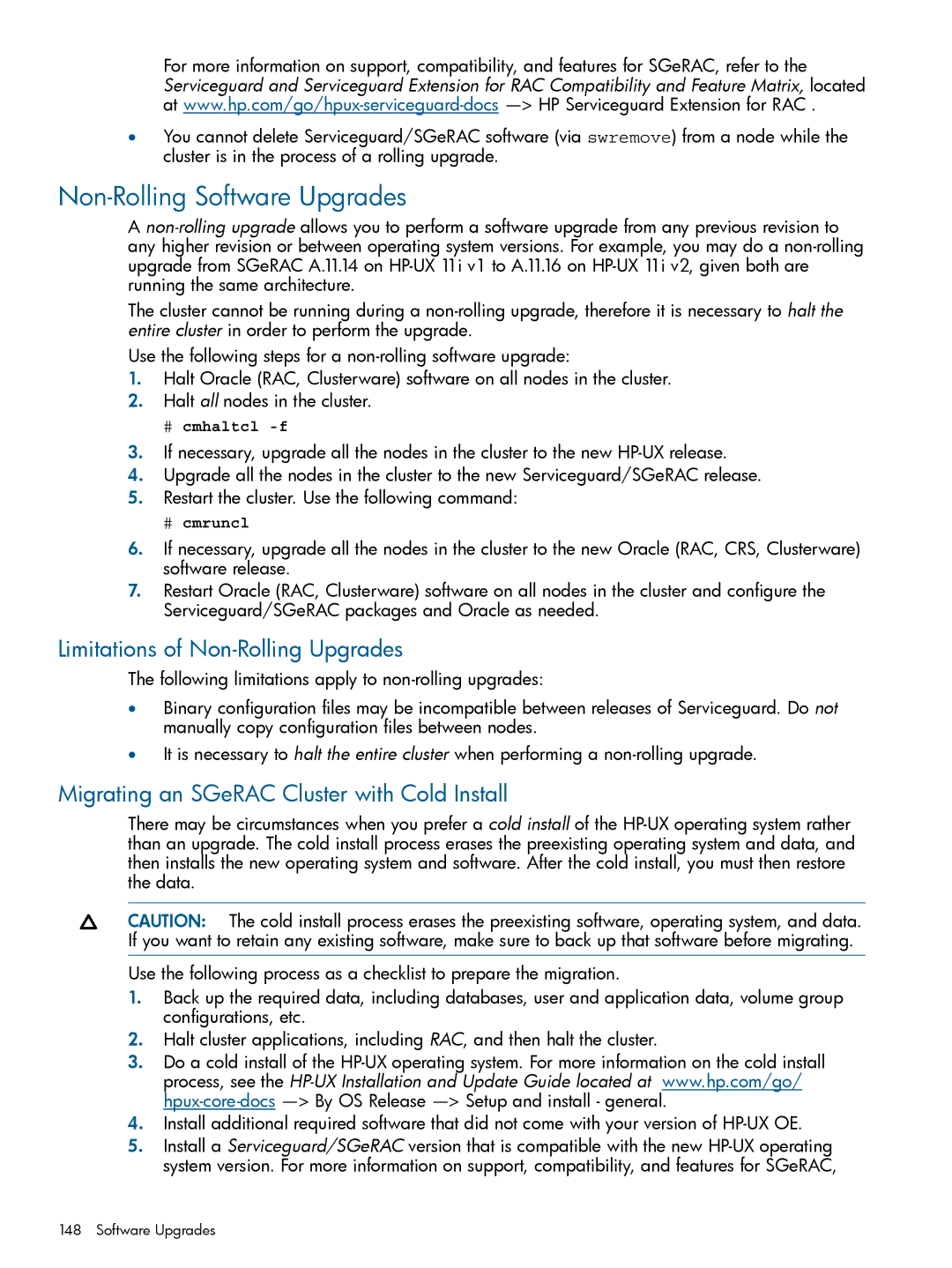For more information on support, compatibility, and features for SGeRAC, refer to the Serviceguard and Serviceguard Extension for RAC Compatibility and Feature Matrix, located at
•You cannot delete Serviceguard/SGeRAC software (via swremove) from a node while the cluster is in the process of a rolling upgrade.
Non-Rolling Software Upgrades
A
The cluster cannot be running during a
Use the following steps for a
1.Halt Oracle (RAC, Clusterware) software on all nodes in the cluster.
2.Halt all nodes in the cluster.
#cmhaltcl
3.If necessary, upgrade all the nodes in the cluster to the new
4.Upgrade all the nodes in the cluster to the new Serviceguard/SGeRAC release.
5.Restart the cluster. Use the following command:
#cmruncl
6.If necessary, upgrade all the nodes in the cluster to the new Oracle (RAC, CRS, Clusterware) software release.
7.Restart Oracle (RAC, Clusterware) software on all nodes in the cluster and configure the Serviceguard/SGeRAC packages and Oracle as needed.
Limitations of Non-Rolling Upgrades
The following limitations apply to
•Binary configuration files may be incompatible between releases of Serviceguard. Do not manually copy configuration files between nodes.
•It is necessary to halt the entire cluster when performing a
Migrating an SGeRAC Cluster with Cold Install
There may be circumstances when you prefer a cold install of the
CAUTION: The cold install process erases the preexisting software, operating system, and data. If you want to retain any existing software, make sure to back up that software before migrating.
Use the following process as a checklist to prepare the migration.
1.Back up the required data, including databases, user and application data, volume group configurations, etc.
2.Halt cluster applications, including RAC, and then halt the cluster.
3.Do a cold install of the
4.Install additional required software that did not come with your version of
5.Install a Serviceguard/SGeRAC version that is compatible with the new
148 Software Upgrades
